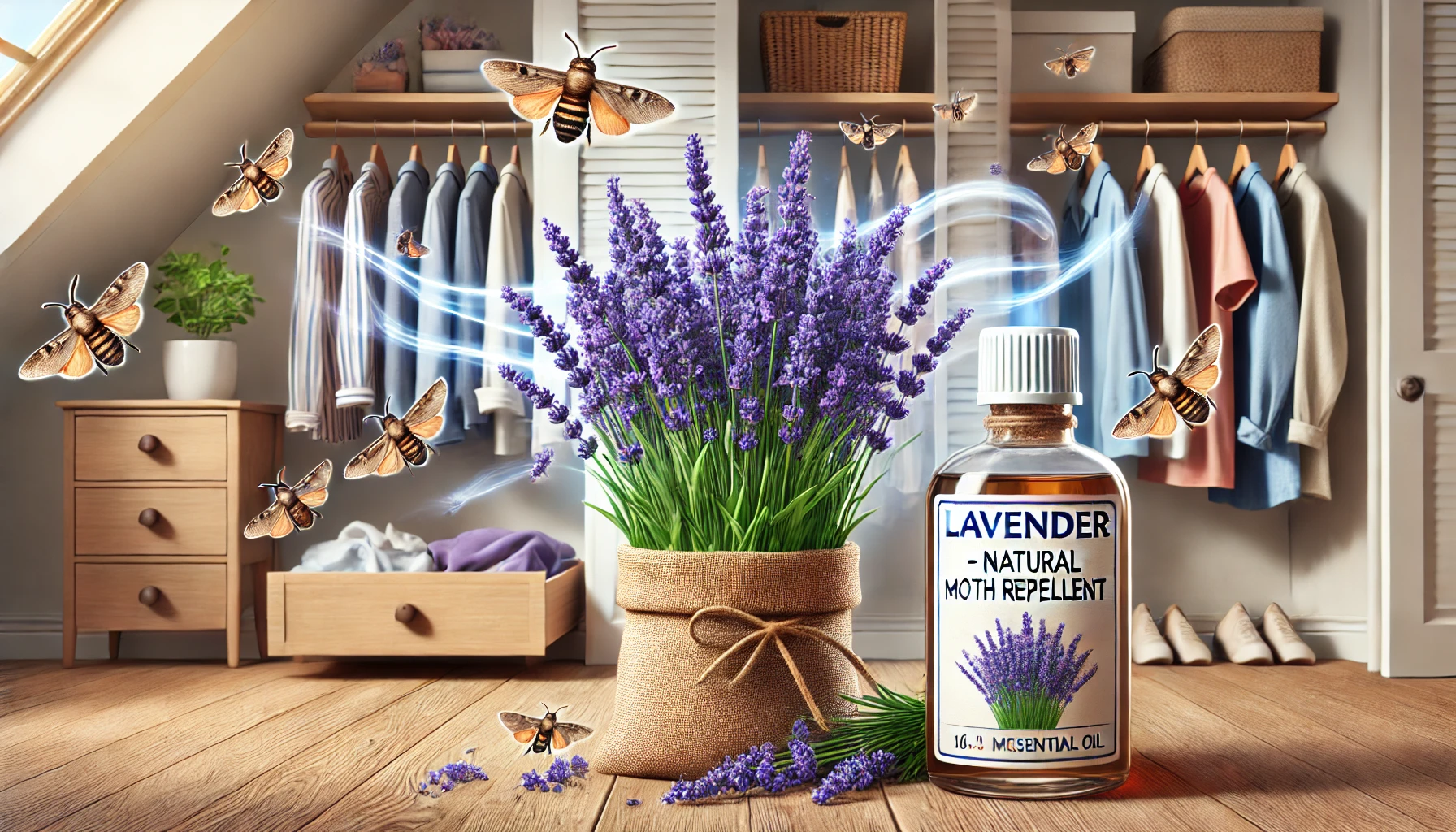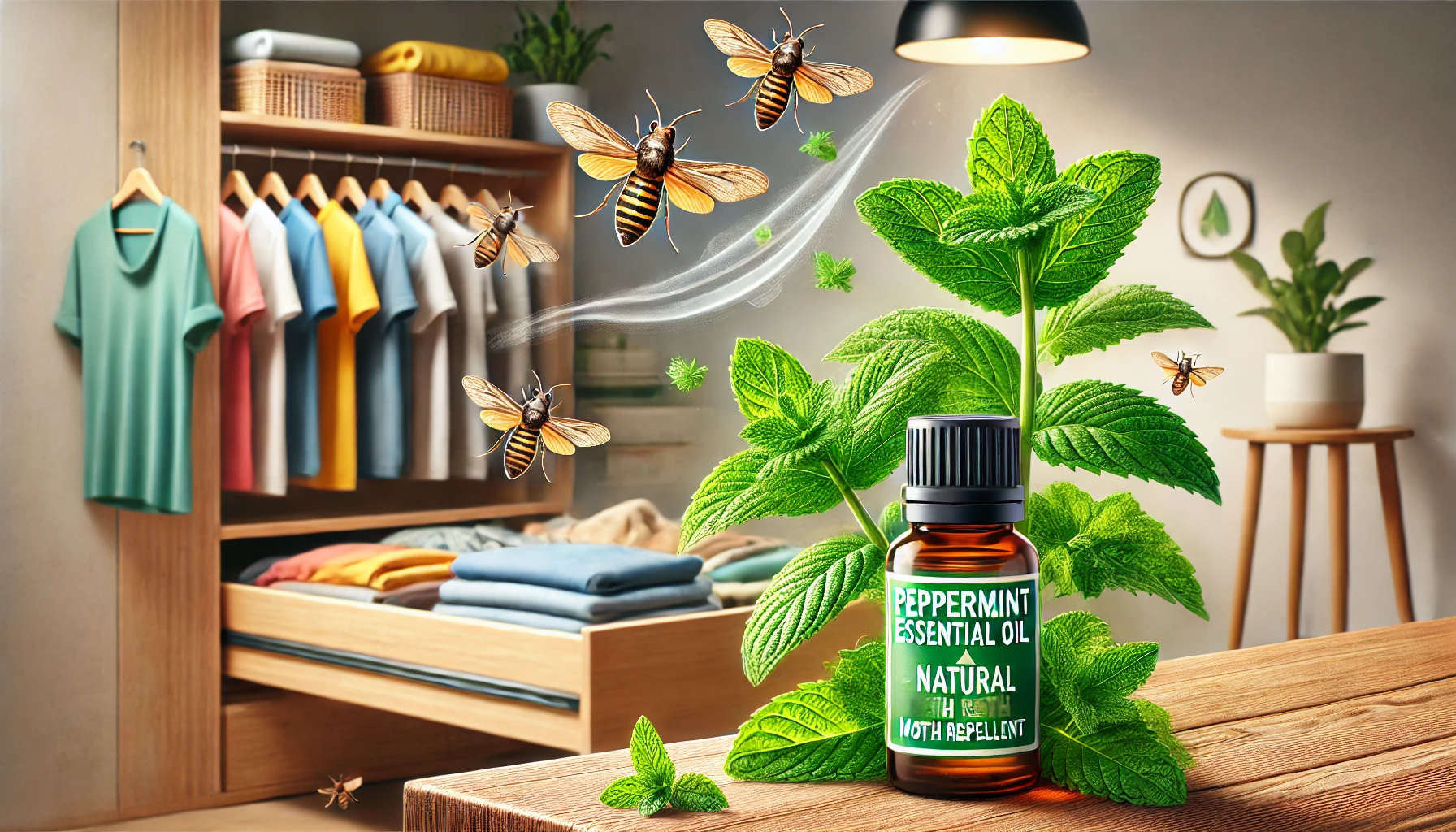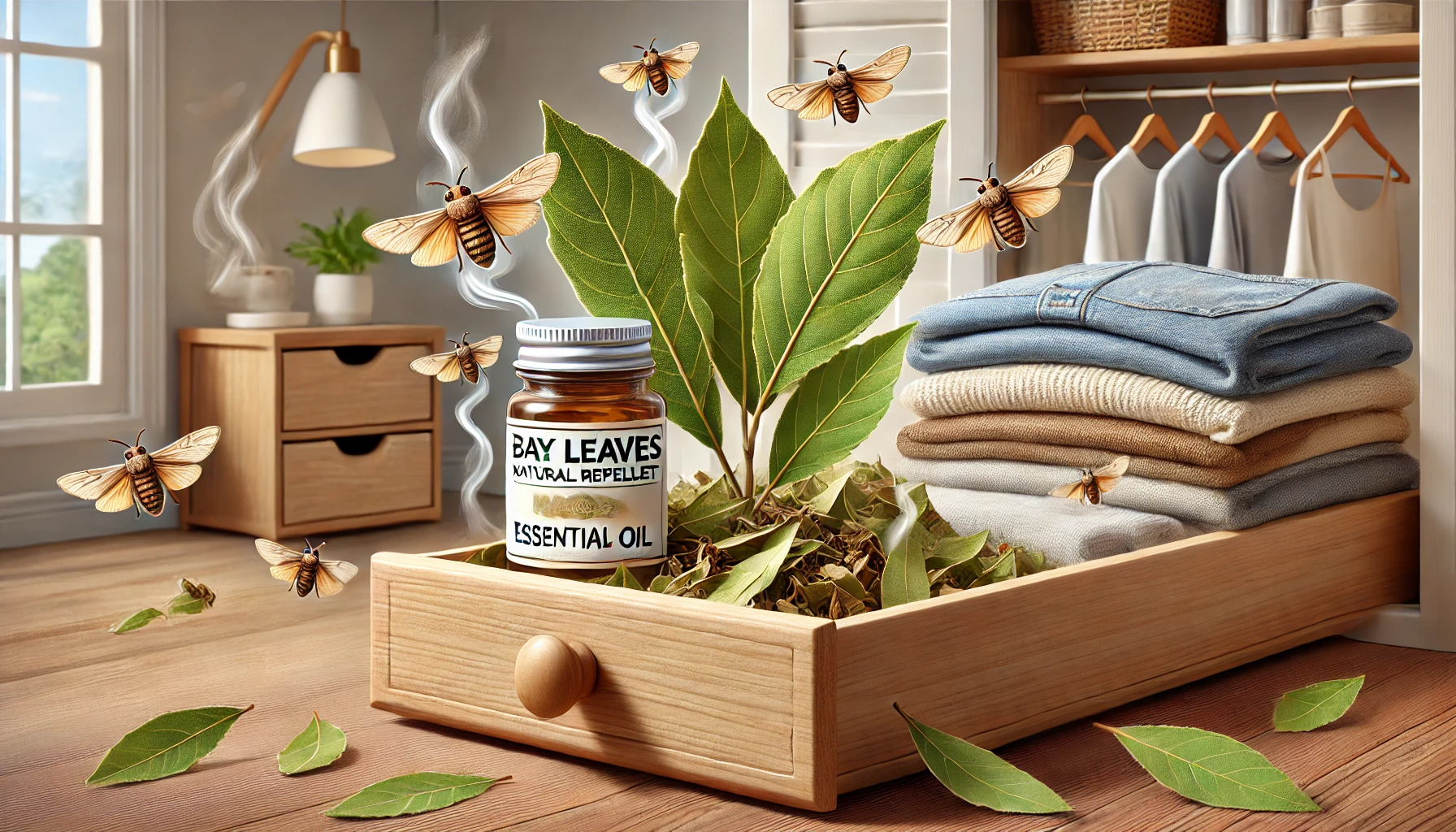Key Takeaways
-
Lavender: Not just relaxing; it’s a moth’s worst nightmare. Great for closets and drawers.
-
Cedar: Grandma knew best—cedar blocks and chests effectively protect fabrics and disrupt moth life cycles.
-
Rosemary: A potent kitchen guardian that keeps moths away and smells amazing.
-
Thyme: Small herb, big impact—perfect for pantry protection.
-
Cloves: Spicy aroma moths can’t handle; ideal for mixing with other repellents.
-
Peppermint: Refreshingly powerful, providing robust protection with a clean scent.
-
Bay Leaves: Simple pantry protector; toss them directly into food containers.
-
Citrus Peels: Don’t throw them away—turn citrus waste into an effective moth repellent.
-
Skip Mothballs: Natural repellents offer a safer, more pleasant-smelling alternative.
-
Keep It Fresh: Consistent cleaning and regular refreshment of natural repellents ensure maximum effectiveness.

Lavender: Pleasant for You, Terrible for Moths
Ever noticed how lavender can calm your nerves instantly? Ironically, that same soothing scent is a moth’s nightmare. Lavender contains linalool, a natural compound that’s irritating and confusing to moths. How to use lavender:- Stash dried lavender sachets in your clothing drawers or wardrobe shelves.
- Spray a diluted lavender essential oil mist around storage spaces.
- Plant lavender bushes near entrances, windows, or outdoor areas to ward off moths naturally.


Not getting a solution?
Get your free pest control estimate today!Cedar: Grandma’s Favorite Trick
If you remember the closets at grandma’s house always smelling a little like cedar, there’s an intelligent reason for it. Cedarwood emits aromatic oils like cedrol and cedrene that repel adult moths and interfere with the development of their larvae. How to use cedar:- Place cedar blocks or rings in closets and storage areas.
- Lightly sand cedar pieces every so often to expose new oils.
- Long-term storage of valuable items in cedar-lined chests or cabinets.

Rosemary: The Kitchen Guardian
Rosemary might conjure images of roast potatoes, but it’s more than just a culinary herb. Its strong scent completely confuses moths, making your home a no-go zone for these pesky insects. How to use rosemary:- Scatter rosemary-filled sachets around clothing and pantry areas.
- Incorporate rosemary essential oil into homemade surface cleaners.
- Keep potted rosemary plants by kitchen windows to deter pantry moths.

Thyme: Small but Mighty
It might be humble, but thyme packs a serious punch. Its robust, earthy scent is exactly the kind of aroma moths instinctively avoid. How to use thyme:- Hang dried thyme bundles in pantry corners or closets.
- Sprinkle dried thyme leaves directly onto pantry shelves.
- Add thyme oil to DIY cleaning mixtures for a double-duty approach.

Cloves: Spicing Things Up
The pungent, spicy fragrance of cloves isn’t just for baking—it’s also a brilliant moth deterrent. Moths find the intensity of cloves intolerable, keeping your storage areas moth-free. How to use cloves:- Place whole cloves in small cloth pouches and tuck them inside clothing storage spaces.
- Mix cloves with lavender or rosemary for enhanced effectiveness.
- Scatter cloves around pantry shelves to safeguard food.

Peppermint: Refreshingly Effective
Peppermint’s sharp aroma might be refreshing and invigorating for humans, but it’s anything but pleasant for moths. They simply can’t handle its overwhelming minty punch. How to use peppermint:- Place cotton balls soaked in peppermint oil throughout closets, drawers, and pantry corners.
- Refresh peppermint oil regularly to maintain its strong deterrent effect.
- Spray diluted peppermint oil around entry points and windows.

Bay Leaves: Pantry Protector
Bay leaves an everyday kitchen staple, emit an aroma that pantry moths absolutely detest. So, if pantry pests are your issue, bay leaves should be your go-to solution. How to use bay leaves:- Place whole bay leaves inside containers of flour, grains, or rice.
- Spread dried bay leaves on pantry shelves to deter moth visits.
- Pair bay leaves with cloves for added protection.

Citrus Peels: Bright and Powerful
Next time you’re peeling an orange or lemon, think twice before tossing those peels away. Rich in limonene, citrus peels are surprisingly effective moth repellents. How to use citrus peels:- Dry citrus peels thoroughly, then scatter them inside closets and drawers.
- Replace peels regularly to keep the oils potent.
- Use citrus-infused sprays around your home as an extra protective measure.
Why Skip Mothballs?
Let’s talk real quick about mothballs—they stink. Literally. Beyond that unpleasant smell, mothballs contain hazardous chemicals like naphthalene and paradichlorobenzene, posing health risks to your family and pets. Choosing natural scents instead isn’t just safer—it’s a more innovative, more pleasant way to keep your home pest-free.Making the Most of Natural Repellents
- Feel free to combine scents for enhanced protection.
- Regularly replace sachets or refresh oils; consistency matters.
- Maintain cleanliness, as repellents won’t eliminate existing moth eggs or larvae.
- Always wrap oils in protective covers to prevent fabric stains.
 If you feel things have gone out of control, it is advised to contact pest control professionals. Our team can provide a customized approach to protect your home effectively.
If you feel things have gone out of control, it is advised to contact pest control professionals. Our team can provide a customized approach to protect your home effectively.
Visit our Species, Control, and Moth DIY Guide sections for additional resources on moth and ways to tackle a moth infestation.





